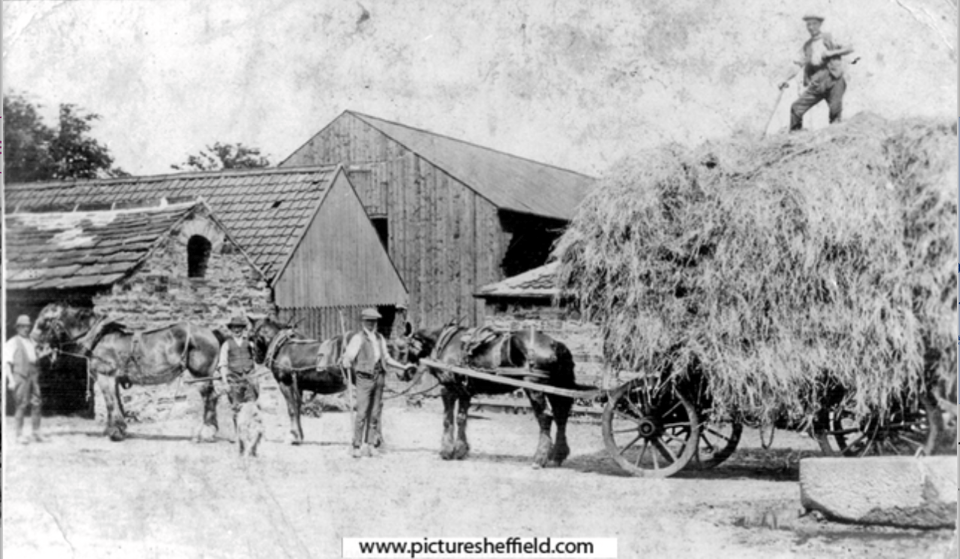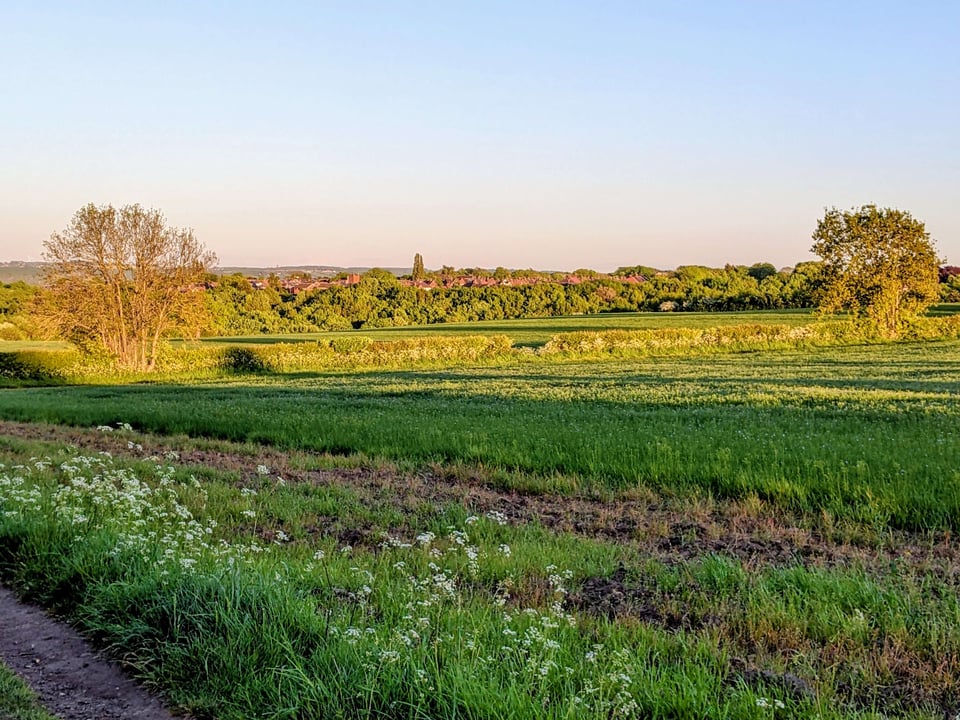The Hearings: Day 5 recap (part 2)
Following Part 1, here’s the summary of the afternoon session of Day 5 of the Sheffield Local Plan hearings, held on 13 October 2025.
This session focused on Bramley Common (SES30) - the other proposed green belt release in the S13 area. Inspector Katie Child once again presided, leading the discussion.
Many of the same participants from the morning remained (including Councillors Mick Rooney and Alison Norris and Sheffield & Rotherham Wildlife Trust) though this time there was no Savills representative for the Duke of Norfolk’s estate, since the majority of Bramley Common is owned by Sheffield City Council. In their place, the Council brought in a highways "expert" to defend the proposed main access to the site from Beaver Hill Road - but more on that later.
👉 Check out our Hearing FAQs: an explainer on what the hearings are and why they matter for S13

What was said?
There were more than three hours of discussion ranging across access, flooding, ecology, land ownership, viability, and the practical deliverability of the site within the plan period. The main points are outlined below, but as with the previous session, condensing more than three hours of discussion into one email is no easy task.
To wrap things up, we’ve included our barrister’s closing comments and the Inspector’s response, word-for-word.
🚗 Transport and Access
The Council’s preferred main access off Beaver Hill Road faced sustained challenge. Residents highlighted frequent flooding in the area, where blocked culverts have caused buses to halt and led to flooding of nearby football pitches and gardens on the Badger Estate. Campaigners questioned how such a constrained road could realistically serve as access for nearly 900 homes, a school, and a burial ground.
Because an unmodelled watercourse runs through the site, the access solution may require a bridge - raising the prospect of costly engineering works before any homes could be occupied. Concerns were also expressed about connectivity across the site, including safe links to any school and cemetery, should the watercourse and its buffers restrict vehicle and pedestrian movement.
A secondary access via Beaver Avenue was discussed, but the Council’s “expert” repeatedly described it as “secondary” without identifying any enforceable mechanism to ensure it remains so - deferring the issue to the planning application stage rather than resolving it at allocation. The Council’s overall position relied heavily on “in-principle” assurances, rather than site-specific transport evidence.
(Correspondent’s opinion: “In principle”, almost anything is possible - but planning should demand more than theory. It was also noticeable that access via Bramley Lane was not mentioned at all…)
On the local Handsworth road network, the impact on Handsworth Grange Road and Retford Road remains uncertain. The S13 group warned that Handsworth Grange Road will become a rat-run due to the proposed traffic lights at the junction of Beaver Hill Road and Retford Road - sending more traffic past two busy school entrances and posing a clear safety risk to pupils.
No monitoring has been undertaken by the Council to assess the effects of the temporary traffic lights currently in place in our area - which could have provided a useful proxy for how the proposed new signals would operate - and local windfall sites were excluded from the local transport assessment, meaning the overall traffic impact is likely to have been underestimated.
🌧️ Flooding and Watercourses
The Council relied on Level 2 Strategic Flood Risk Assessment work to argue that most of Bramley Common lies in Flood Zone 1, but residents and campaigners challenged this as desktop-based and out of step with actual ground conditions. They pointed to frequent ponding and surface-water flooding - particularly behind Beaver Drive - warning that model outputs fail to reflect real on-the-ground conditions during heavy rain.
Campaigners also queried how the site passed the sequential test if these access risks are already known, and noted that foul-water discharges have been a recurring problem in nearby Catcliffe, underscoring wider network impacts and vulnerabilities.
A watercourse runs through the site and is currently unmodelled. The mitigation shows only an 8m buffer each side, which the S13 campaign said is insufficient given hedgerows, woodland and wildlife along that corridor. We argued that once realistic buffers and flood-mitigation measures are applied to manage surface- and groundwater issues, the developable area could shrink significantly.
Finally, while a Phase 1 groundwater study has indicated low to moderate risk, participants stressed that a Phase 2 investigation is still needed - and that deferring this and other critical evidence to planning application stage leaves allocation-stage certainty lacking.
In short, until the access design, watercourse modelling, and buffering/mitigation are evidenced and agreed, the flood and water environment constraints remain unresolved.
🦇 Ecology and Ancient Woodland
Three Local Wildlife Sites adjoin the allocation, yet there is still no species-level evidence available. The Wildlife Trust and residents pressed for larger buffers, including recognition that ancient woodland (and associated bat foraging) may require much greater buffers than currently shown.
A Preliminary Ecological Assessment has been produced but was described as containing assumptions and lacking up-to-date survey data. The site also includes several veteran trees, with Tree Protection Order (TPO) requests for others said to be outstanding.
There was also concern that Bramley Common contributes to the Nature Recovery Network (NRN), with some evidence suggesting it should be designated as such (i.e., formally identified and mapped for habitat protection, restoration, and connectivity under the Local Nature Recovery Strategy) rather than released for development - yet the detailed NRN work won’t be complete until 2026.
🗺️ Land ownership, tenancy and site extent
Questions were raised about ownership on the western edge of the allocation - roughly the site of the old Myrtle Bank Farm - which belongs to a landowner who hasn’t been consulted and doesn’t wish to sell.
(Correspondent’s opinion: see the article in the Sheffield Star for more: Landowner angered he was not consulted over controversial S13 housing plans.)
Separately, campaigners noted an active agricultural tenancy, with reports of a break clause but no current Statement of Common Ground confirming vacant possession.
Several participants argued that the site capacity appears to shrink each time buffers, water, ecology, and ownership gaps are accounted for - casting doubt on the number of houses that can actually be built.
⛏️ Ground conditions and mining
The hearing heard that parts of the site sit in higher-risk coal mining areas, with an email and mapping from the Coal Authority/Mining Remediation body expected to appear on the examination website. While not as complex as some other locations, the need for Phase 2 ground investigation was accepted, again pushing critical evidence to planning application stage rather than resolution at allocation.
❓ Viability, phasing and trajectory
No up-to-date viability assessment has been published for Bramley Common, and cost assumptions were said to be out of date, with soil assessments also not yet completed.
The Council’s build-out trajectory was challenged as optimistic relative to typical industry evidence (e.g., Lichfields rates). The proposal to seek 50% affordable housing (due to Council land ownership) was questioned for its realism and potential to concentrate deprivation in Handsworth.
🏥 Local services and social infrastructure
Participants described local primary care as already at breaking point, with no firm, funded plan for expansion aligned to Bramley Common’s timescales; individual surgeries have not been directly consulted about their current and future capacity to absorb this development.
There were also unresolved questions about secondary education (including lack of sixth-form provision in S13), the siting of a burial ground, and how these would be delivered in step with homes rather than after the fact.
⚠️ Key issues raised
Access & safety: Beaver Hill Road’s flooding history and an unproven secondary access create unresolved safety and capacity risks.
Watercourse & buffers: Under-specified watercourse modelling and insufficient ecological buffers could materially reduce developable land.
Evidence timing: Core studies (ecology, Nature Recovery Network, ground conditions, viability) are deferred to planning, leaving allocation-stage certainty lacking.
Ownership & tenancy: The unavailability of the Myrtle Bank Farm parcel, and uncertain vacant possession undermine immediate deliverability.
Trajectory: Optimistic build-out and 50% affordable ambitions may be unviable without evidence - and risk concentrating deprivation in Handsworth.
Services: GP capacity, education (including sixth form), and burial space not yet planned or funded to match the trajectory.
Closing Remarks from our Barrister

Rowan Clapp concluded the day with this summary of the Bramley Common site, which is repeated word-for-word:
“A quick point that I think has been saved until now.
“The site is in agricultural use at the moment, the Council haven’t assessed whether it’s BMV (Best & Most Versatile) land or not, so we know it’s grade 3 land but we don’t know whether it’s grade 3a or grade 3b. You have my submissions on the appropriateness of when that assessment should take place from the previous session.
“To draw a few things together for the S13 Group, on the planning issues at SES30.
“The issues affecting the site that I think are effectively common ground between the Council and us:
Areas of the site are in flood zones 2 and 3;
There’s a waterway running through it;
The site requires a 15m buffer to the south which has not been included in any plan;
A private landowner owns some of the site;
It’s been recognised as desirable as a BNG (Biodiversity Net Gain) site on national register;
As far as the Council are aware it could all be comprised of BMV land;
Parts of the site are part of a former mine;
Parts of the road network would be operating at near 100% capacity (after mitigations) if the proposal comes forward;
One of the proposed accesses goes through a designated green space;
The Council haven’t considered how access to the marooned north of the site would come forward nor serve the required number of dwellings there;
There’s been no site-specific viability analysis despite the constraints I’ve referred to; in fact, the present viability analysis hasn’t been updated in terms of build costs or CIL (Community Infrastructure Levy) inputs for several years;
The total developable area of the site is clearly significantly less than claimed.
“It’s a fair point you aren’t being asked to deal with a planning application; but the site plainly has numerous features which make it an obviously undesirable allocation, and even stripping that away, this site isn’t going to deliver anything like the quantum of housing which has been suggested, and it’s not going to do it at anything like the rate which has been suggested
“And given the constraints that I’ve referred to there are serious and open-ended viability issues about doing so.
“So plainly we say this should not be an included allocation.”
To which the Inspector replied:
“Ok thank you for that. Did the Council want to say anything, in response to anything? No…? I don’t blame them (laughing) … I like that.”
Correspondent’s Opinion
It’s clear that the deliverability of Bramley Common hinges on a long list of unanswered questions - from access design and flood mitigation to ecological impacts, ground conditions, land ownership, and infrastructure funding.
As residents repeatedly pointed out, until those issues are properly evidenced, the allocation is built more on hope than on certainty.
That tension shaped the mood in the room: while the Council maintained that the site could be made to work - “in principle” 😃 - they offered little to show that it would.
The community, meanwhile, is asking why the site is being taken out of the Green Belt before the necessary evidence is in place. This demonstrates that the plan hasn’t been properly thought through - and the result could be the loss of our Green Belt.
And with that loss, we wouldn’t just lose land or open space; we’d lose one of the last community assets we have - and with it, the character and identity of S13 itself.
The Hearings: News Articles
You can explore all the latest coverage on our website’s Press Articles page, where we’re adding new pieces every day as they come in.
👍 Support the cause
Photo competition
Don’t forget our photo competition. We’re looking for photos of our beautiful S13 green belt to include in our 2026 calendar.

See competition details on the website.
Details on how to buy the 2026 calendar in local shops, ready for Christmas, will follow soon.
Contact
If you want to get in touch please email us at either:
info@saves13greenbelt.org.uk - email the working group.
website@saves13greenbelt.org.uk - suggestions/additions to the website.

